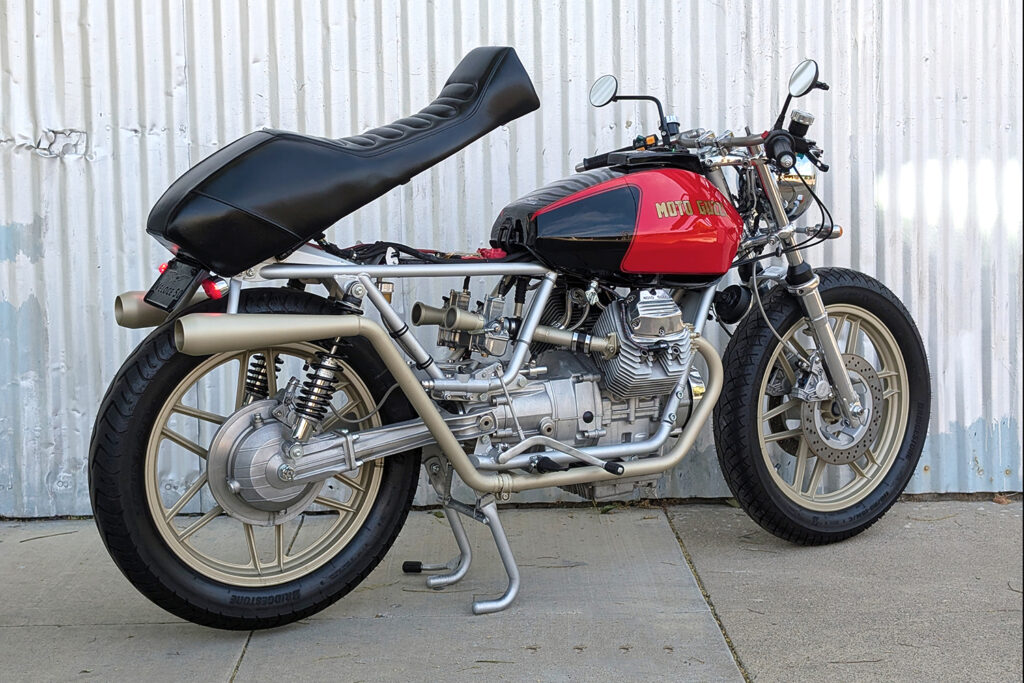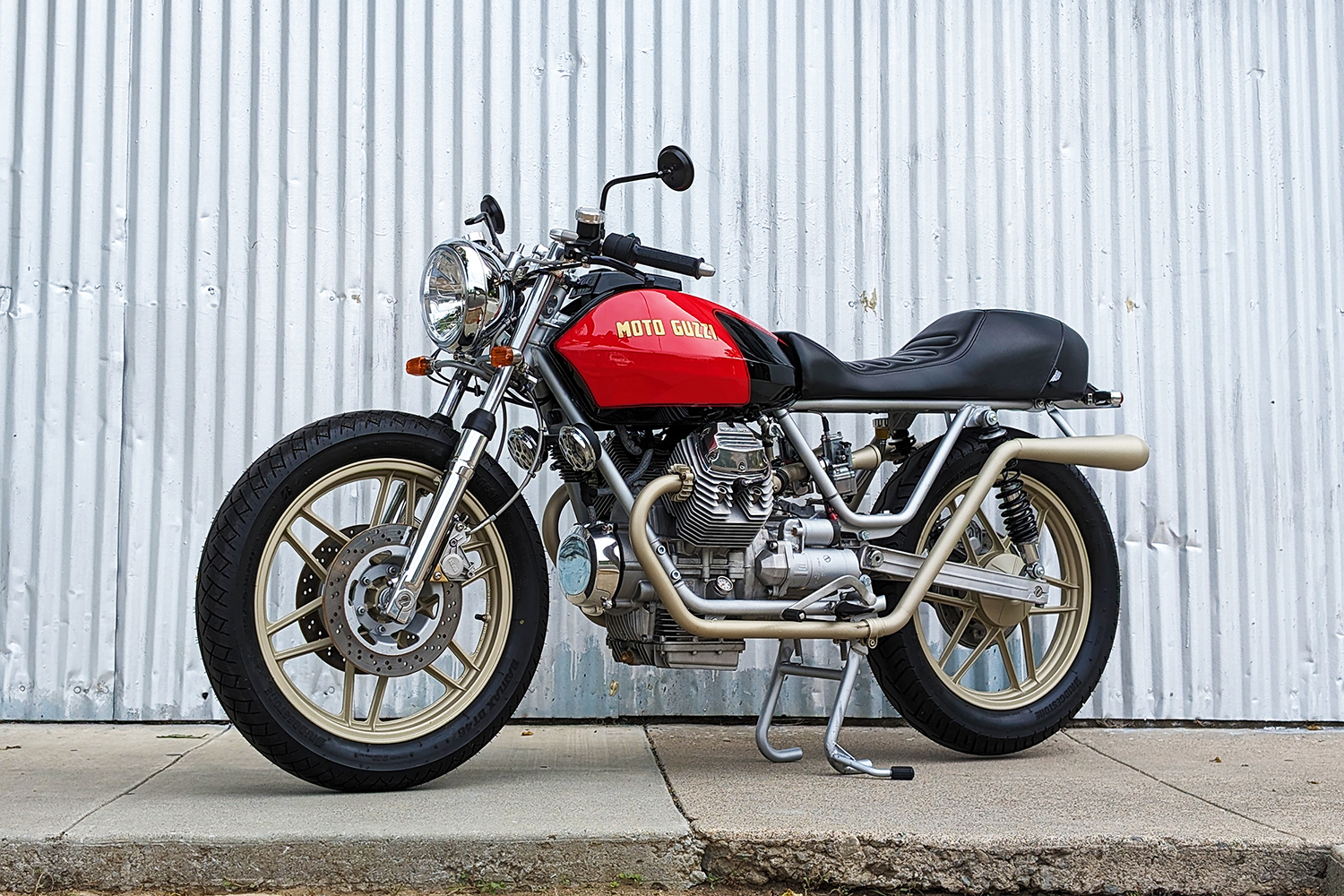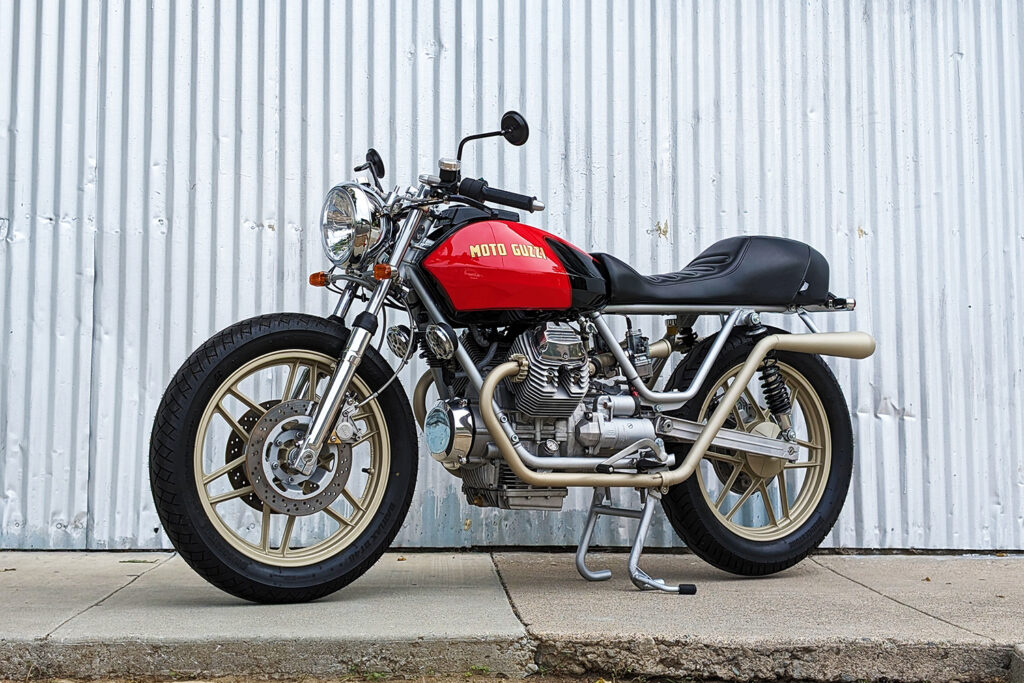
There are thousands of brilliant books and documentaries that detail the history of motorcycles and their design. But if you truly want to understand a bike and the people who built it, then arguably the best way to do so is to pull one apart and build it back up. For backyard builder Nate Rechenmaher of San Jose, California, the allure of a Moto Guzzi V50 II was all in that stunning frame design. At the time, he had no idea about the genius Lino Tonti, the man behind so much of Guzzi’s success. So, as he pulled his V50 apart, his new appreciation for that man and his machine meant he transported himself back to 1979. And from his workshop in the heart of high-tech Silicon Valley, he has built a glorious Guzzi, with endless classic appeal.
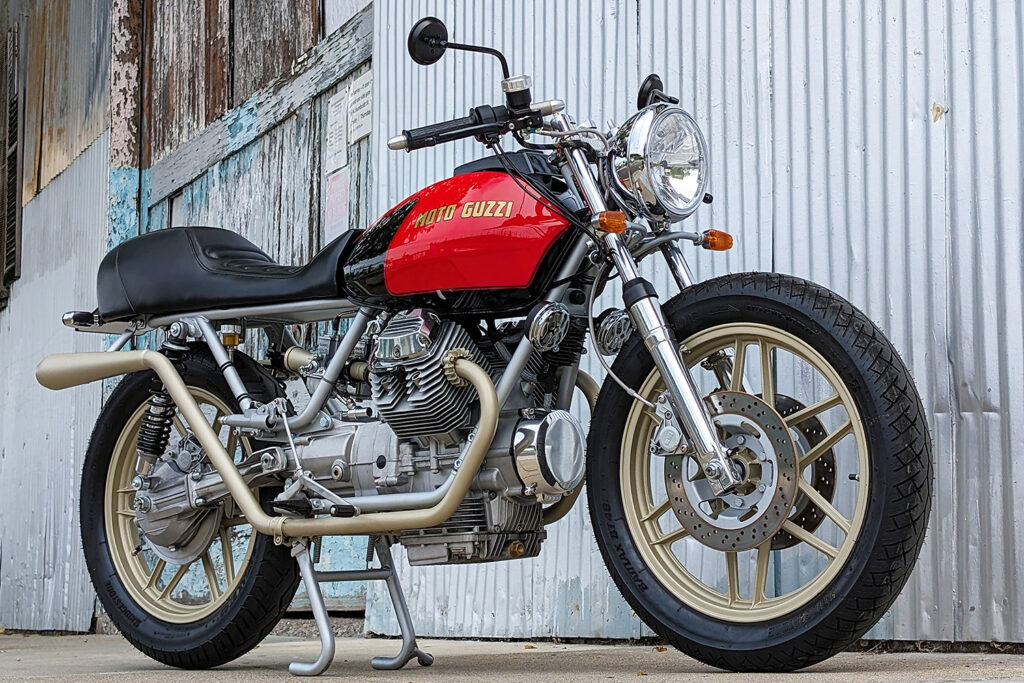
“I didn’t know anything about Lino Tonti when I started this build; I just really liked the frame of the MG V50 and thought it stood out above all other frames. After a little research, I found that’s what Lino is most famous for, the development of the Toni frame in his workshop with his lead engineer. So, I took this as inspiration for the build and did everything I could to reveal and accentuate the frame,” Nate tells us. And in the V50, you have one of Tonti’s favourite creations. It was his answer to the need for a middleweight machine during the ’70s oil crisis, and unlike his main rival, the bulky CX500, the MG weighs just 158kg.
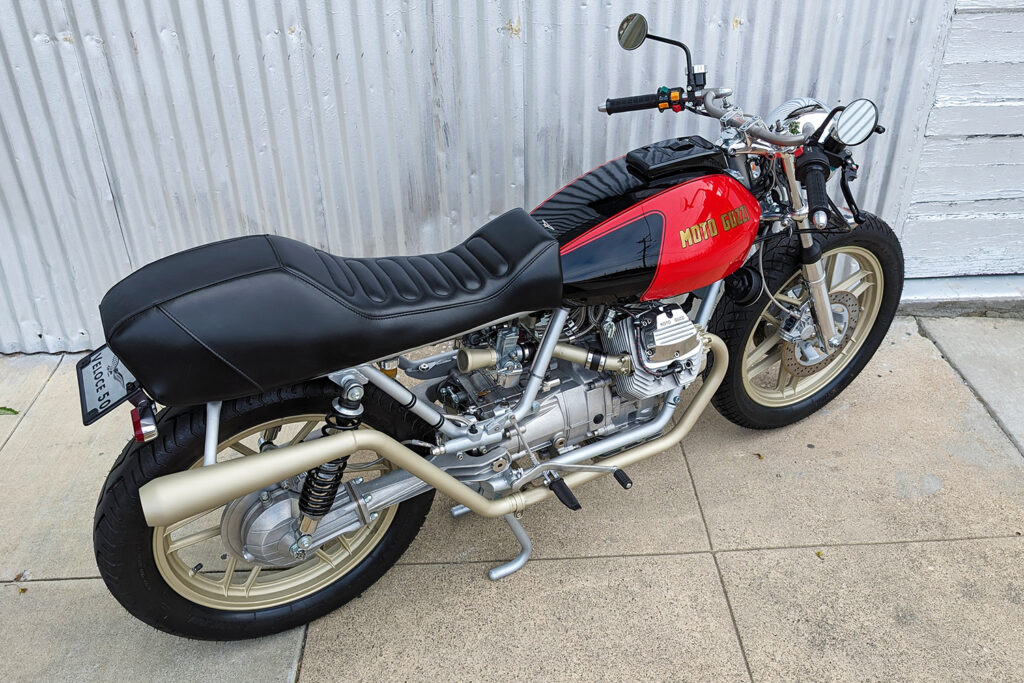
Being a big fan of industrial design, Nate sat down and started creating endless sketches of how his V50 could be transformed. “At this point, it occurred to me that far too often a bike loses its identity during the customisation process, and very little, if any, credit is given to the person who brought the bike into existence. A new challenge presented itself: I’ll make every single design decision as if I’m in 1979 with Lino Tonti in my workshop.”
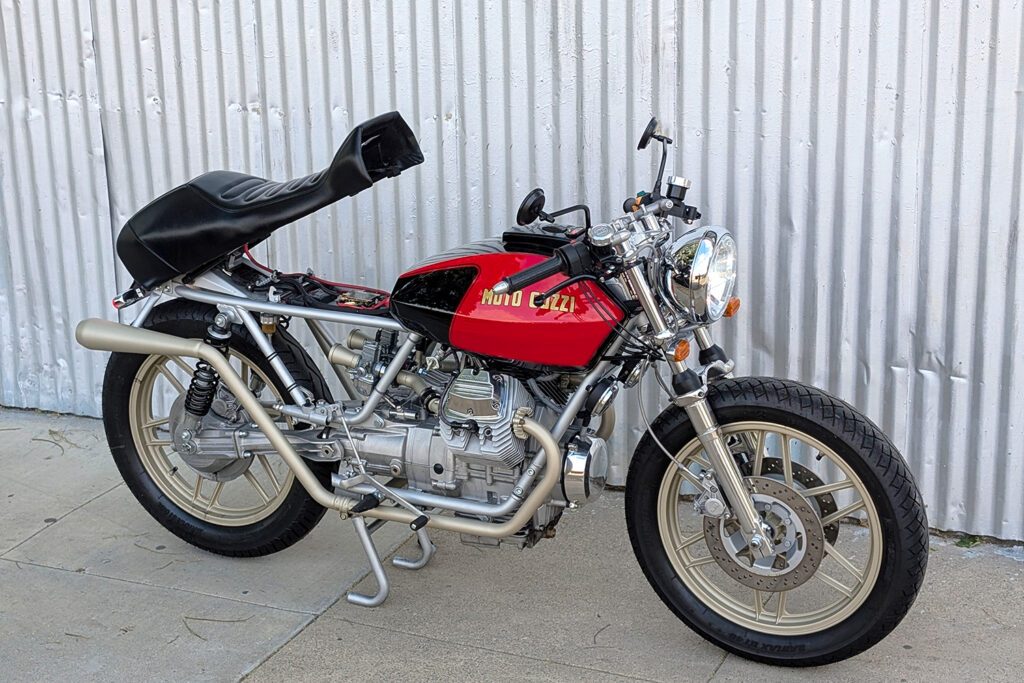
As you would expect in a Tonti-designed motorcycle, the simplicity of his frame, with that V-Twin engine and shaft-driven rear, dominates the visuals. And it makes perfect sense, why hide something so iconic, one of the most brilliant achievements ever conceived in combining form and function. To ensure the chassis stands out, rather than the usual black, Nate has gone for a silver finish, and it works wonderfully well! Next, the stock tank goes over the backbone, with the temptation to choose something more conventionally beautiful set-aside. “I would have loved to remove the bulky gas door on the top of the tank and replace it with a chrome Monza cap, but by resisting this impulse, I found design inspiration.”
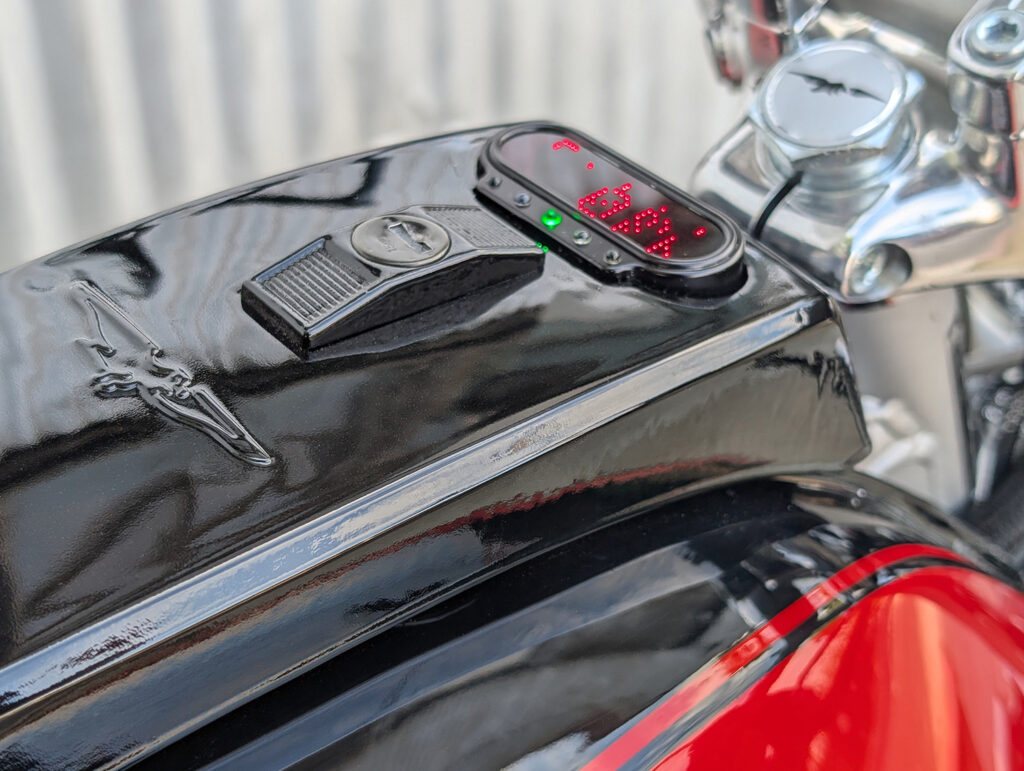
Under the bulky door, Tonti had hidden functional parts, and Nate used it for a similar purpose: as the mounting location for a Motogadget motoscope mini gauge, keeping the front end beautifully clean. But the lines remain very much planted in 1979, with the original gas tank now flawlessly finished in its black and red hue, staying true to Tonti. Again, Nate has shown immense discipline; sure, he could have gone for the latest carbon fibre cafe racer tail and seat combo, but the big leather piece on the stock pan is spot on.
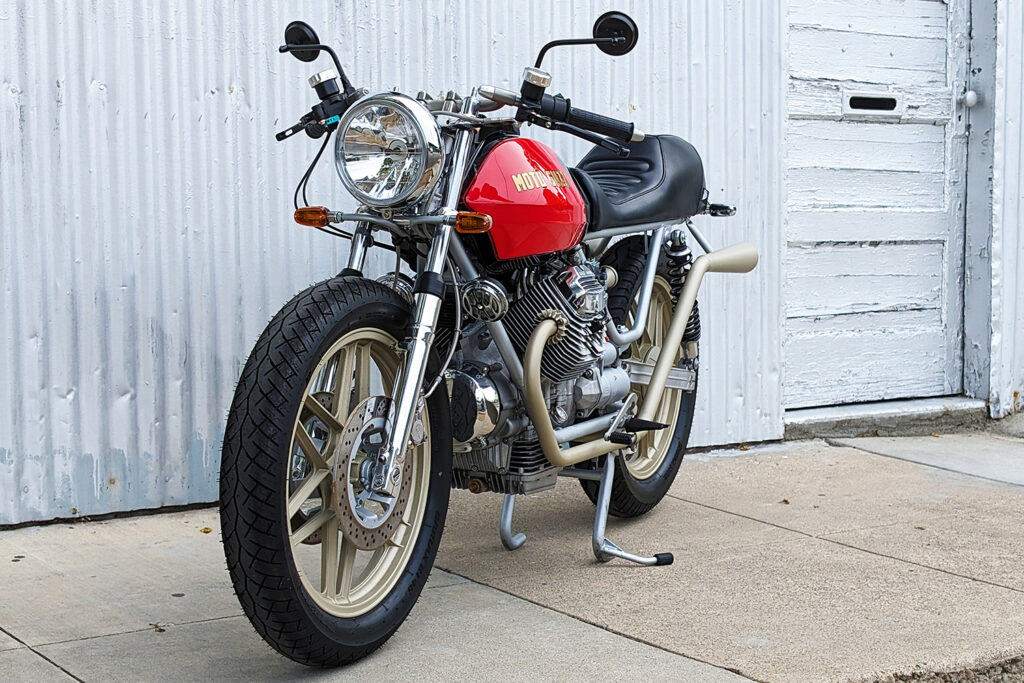
The suspension, brakes, and wheels keep that theme moving forward cohesively, but they look a million times better than the original. Quality finishes and coatings have come a long way, and the wheels are resplendent in bronze, with Bridgestone BT rubber maintaining the old-school vibe while providing modern grip. The forks and trees have all been rebuilt to their best, and the hard-wearing chrome finish provides a nice contrast to some of the matte hues. This theme continues on the big powertrain, with clean metal and some highly polished covers.
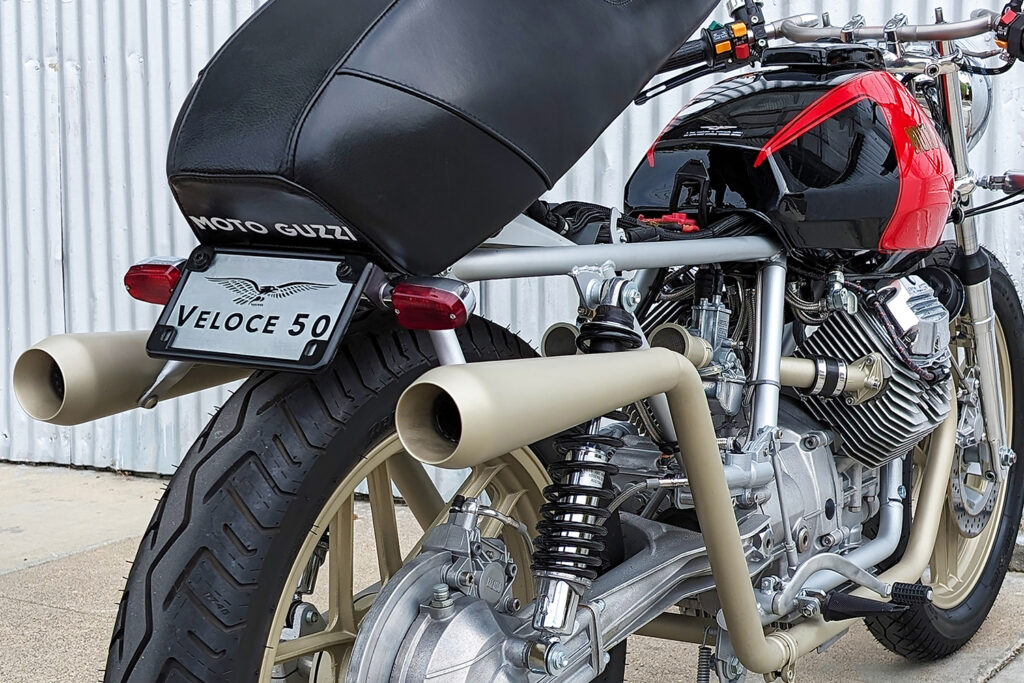
“The intake system is completely unique and fabricated with both design and function in mind,” Nate explains. The long runners plant the carbs neatly in the frame opening, while the length of the intake and the velocity stacks that feed the system will no doubt aid in low-down torque production. “The exhaust is a combination of original headers and extended high-exit Cone Engineering straight-through mufflers, and the added length gives the small block a deep mean tone.” The full system and the new intake are all finished in more bronze Cerakote, which helps to keep the hot gases where you want them.
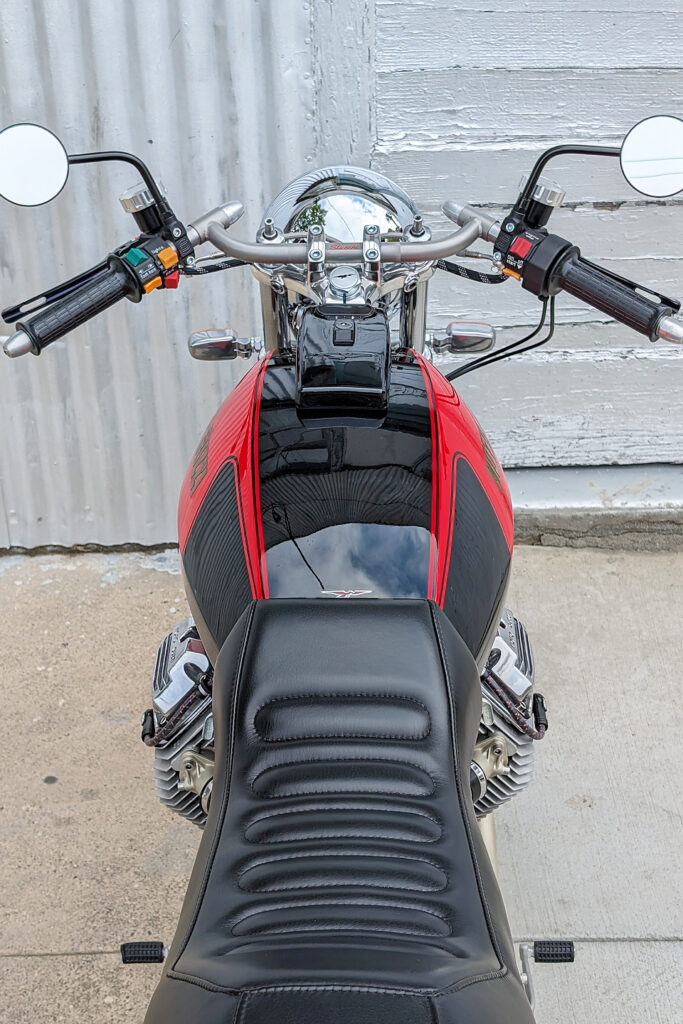
The one area where Nate has wisely deviated is with the electrics; an all-new loom has been built around the brilliant Motogadget products. Not only do you get a cleaner look, but a more reliable system without any of the fire risks of an old Italian. “Moto Guzzis come from the factory with a hinged seat, but they don’t come with struts to show off the electric bits, so I had to add them,” Nate smiles. Then he finished the build with a complete lighting setup that is straight from the ’70s and does nothing to upset the brilliant balance he’s maintained. We will never know what Tonti himself would have thought of this machine, ‘Veloce 50,’ but I have a hard time believing he wouldn’t love it.
